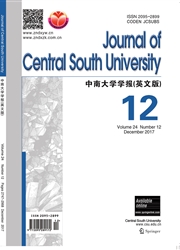

 中文摘要:
中文摘要:
A signal probability and activity probability (SPAP) model was proposed firstly, to estimate the impacts of the negative bias temperature instability (NBTI) and positive bias temperature instability (PBTI) on power gated static random access memory (SRAM). The experiment results show that PBTI has significant influence on the read and write operations of SRAM with power gating, and it deteriorates the NBTI effects and results in a up to 39.38% static noise margin reduction and a 35.7% write margin degradation together with NBTI after 106 s working time. Then, a circuit level simulation was used to verify the assumption of the SPAP model, and finally the statistic data of CPU2000 benchmarks show that the proposed model has a reduction of 3.85% for estimation of the SNM degradation after 106 s working time compared with previous work.
 英文摘要:
英文摘要:
A signal probability and activity probability (SPAP) model was proposed firstly, to estimate the impacts of the negative bias temperature instability (NBTI) and positive bias temperature instability (PBTI) on power gated static random access memory (SRAM). The experiment results show that PBTI has significant influence on the read and write operations of SRAM with power gating, and it deteriorates the NBTI effects and results in a up to 39.38% static noise margin reduction and a 35.7% write margin degradation together with NBTI after 106 s working time. Then, a circuit level simulation was used to verify the assumption of the SPAP model, and finally the statistic data of CPU2000 benchmarks show that the proposed model has a reduction of 3.85% for estimation of the SNM degradation after 106 s working time compared with previous work.
 同期刊论文项目
同期刊论文项目
 同项目期刊论文
同项目期刊论文
 期刊信息
期刊信息
